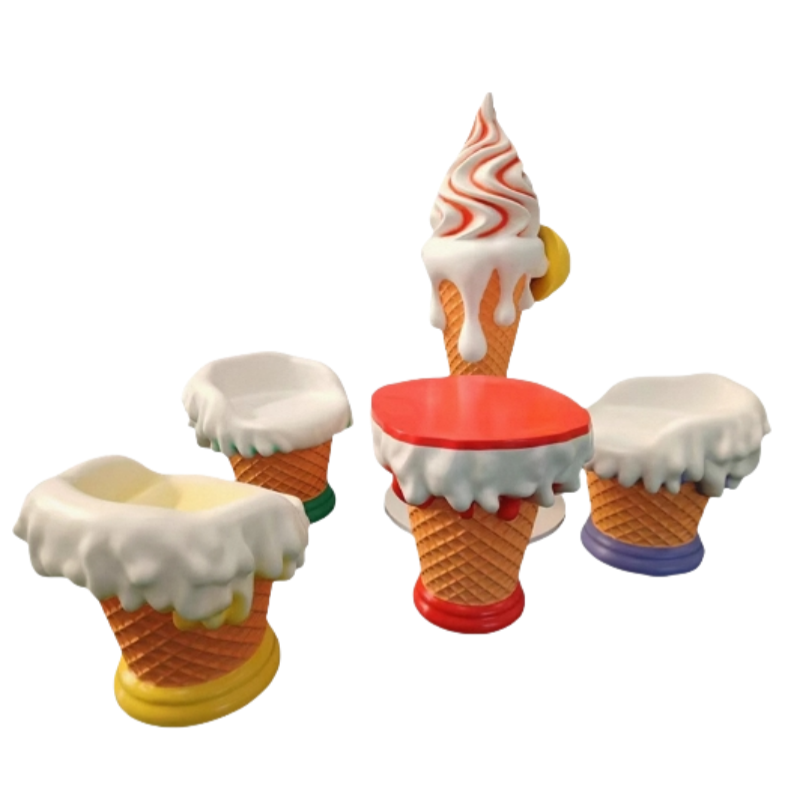Elevating Spatial Experience Through Strategic Sculpture Placement
Sculptural Anchors as Navigational Landmarks
Sculptures can be much more important as way finding devices in facilities like malls. Through the careful placing of sculptural anchors, malls lengthen the spatial experience and create distinct paths of wayfinding, diminishing disorientation among their patrons. For example, mall centers that feature very large sculptures serve to organize foot traffic, reducing time wasted getting turned around in a large space and the anxiety of being lost. Additionally, sculptural wayfinding can increase confidence in consumers; an orientation-inducing concept that can also serve as a psychological shelter that promotes exploration and even longer stays. Utilizing sculptures such as important personalities and abstract structures might not only artistic work but functional material that contributes much to the ambiance and feel of a mall.
Lighting Synergy With Three-Dimensional Art
Lighting is a key design element to bring out the 3D art installation in retail space. The effect of light can be very stunning on sculptures for the appeal it creates to those who visit a place. The features of sculptures can be emphasized by LED lighting and sculpture with strategic use of spotlight to enable a dynamic and interactive environment. For example, a shopping mall could alter its environment by using the interaction of light and art to enhance shopper perception, which could result in increased sales due to enhanced visual appeal. Increased foot-fall and one window installation brings new customers into store: the results of lighting synergy with sculptural displays.
For more information on how sculptures can be integrated effectively in retail spaces, explore Jiangsu Special Time Sculpture Art Co., LTD's interior decoration products here.
Material Choices Conveying Premium Aesthetics
The material used in sculptures has a significant influence on the quality and luxury of a retail environment. Bronze, marble and glass are beautiful materials that we associate with quality and worth. The iterature on consumer psychology reveals that these are considerations which affect how the customer feels about the brand, and the tactile nature of the experience in such an environment produces a greater sense of luxury or the exclusive. "Visitors might think when they see a marble sculpture and how weight and polish is sophisticated and this might subtly affect what people purchase." Research in human surroundings also indicates that consumers can be influenced to spend more in places where qualities of higher value and quality are implied.
Scale Dynamics in Luxury Perception
The size of sculpture can have a dramatic impact on how a product reads for luxury within retail environments. Sculptures in the SupermarkGrocery StatuesSupersedeordinaryImagine, large-scale sculptures tend to be associated with stature and that affects customer’s emotions and behavior when shopping. Luxury retail experts say that larger installations can elicit feelings of wonder and exclusivity, aiding in establishing the retail as a premium brand. Consumer behavior research also suggests that big, bold art can increase perceived value of products, with size being a driver of luxury perception, and potential for increased consumer spend.
Interactive Art Installations Driving Engagement
Interactive art experiences work extremely well to extend customer dwell time in retail environments. By asking for visitor participation these installations become fun experiences that keep consumers around. Interactive sculptures like this can turn a regular shopping trip into a memorable experience and increase the duration that visitors stay in the shopping environment. For example, the deployment of interactive art in some retail environments, has led to huge increases in footfall and engagement metrics through the creation of unique experiences such as a personally tailored digital screen to a large scale community piece of interactive art that brings people together. Research says that there is a strong connection between interaction with interactive art and spike in sales, so these installations not only enhance shopping experiences, but also drive sales.
Photo-Worthy Installations Amplifying Social Sharing
In the age of social media, we just can't help but love Instagram-worthy installations which serve as foundations of many retailers retail marketing efforts to further drive social sharing and engagement. Presenting various Instagrammable sculptures which become the main element in attracting shoppers into showrooms. Studies show that these installations in shopping malls can really boost footfall and generate hype on social media. For instance, attractive pieces of photography-friendly art - like big eye-popping murals and very large-scale colourful sculptures - have led to greater marketing efforts, with customers posting their experiences to social media. The some studies demonstrate the effectiveness of these strategies, illustrated by how visually appealing art installations convert to more interesting and increased footfalls, and subsequently boosting sales and brand reach.
Signature Art Pieces as Brand Identifiers
Forming Descriptions Luxury brands commonly use signature sculptures to differentiate themselves in the competitive retail environment. These pieces serve as brand devices, creating a lasting impression and bringing the audience to want to read more. "The real and evident reality of well-identified works of art is the main contributor to brand love, since it is connected to the deep image that the consumer has related to the brand values and being," marketing experts point out. For example, highend brands such as Louis Vuitton have incorporated such sculptures into their store environments, adding value to the brand and in turn, the shopping experience. These designs are an example of fine art that defines who these establishments are and keeps their customer base coming back for more.

Collaborative Artist Partnerships
Symbiotic relationships between brands and today’s artists provide an effective mechanism to elevate brands and engage more consumers. Combining luxury branding with creative innovation, these partnerships yield original installations that engage both new and current customers. Examples of successful collaborations with the sculptor Anish Kapoor show how using commissioned art in brand spaces can pay dividends. Industry sources indicate that such partnerships raise the brand ROI by footfall driving and consumer traction. The integration of luxury brands and artist creations accentuates the common pursuit of creativity and exclusive expression, which provides a double-win situation of real-time commercialization and brand upgrading.
Holiday-Themed Installations & Retail Conversion Rates
“Holiday, and seasonal, overall, sculptures are very, very successful at attracting and engaging consumers in malls and shopping centers,” Emmons added. Malls can greatly improve the pull of their development by bringing a lively ambiance during major celebrations. Research shows that holiday art installations can raise retail traffic by 30% during busiest shopping seasons. This is because holiday decor has appeal to shoppers’ emotions, he says, and affects how long they stay at malls and how much they buy. Themed sculptures provide added visual appeal and cheer, prompting a positive shopping mood and helping to create great shopping memories—encouraging repeat shoppers and inspiring brand loyalty.
Temporary Exhibition Strategies
Pop-up sculptural installations are a fresh way to excite and welcome a broad range of consumers. The exhibits are also typically temporary, which helps generate a sense of urgency — and the fear of missing out on something not everyone is seeing. Retailers market such shows in a variety of ways — such as through social media campaigns, early previews and interactive features that capture attention and drive traffic. Successful precedent—observed at locales like AREA15 in Las Vegas or at Culturespaces sites—proves out the notion that transitory art can lead to a significant uptick in customer interest. These events appeal both art aficionados and curious shoppers fascinated by distinctive products, leading to an even higher footfall in events and enhanced overall retail activity.
FAQ Section
What are sculptural anchors?
Sculptural anchors are large sculptures strategically placed in venues like shopping malls to act as navigational landmarks, providing wayfinding cues and enhancing spatial experience.
How does lighting affect sculptures in retail environments?
Proper lighting techniques, such as LED lighting and strategic spotlighting, enhance the visibility and allure of sculptures, creating a dynamic and interactive space that captivates visitors.
Why are certain materials used in sculptures related to luxury perception?
Materials like bronze, marble, and glass are associated with elegance and value, influencing consumer psychology by enhancing the perception of luxury and exclusivity in retail spaces.
What impact do large-scale sculptures have on retail spaces?
Large-scale sculptures create a sense of grandeur and opulence, impacting customer emotions and making the shopping experience more memorable, thereby potentially elevating perceived product value.
How do interactive art installations affect customer engagement?
Interactive art installations increase customer engagement by inviting participation, creating memorable experiences, and encouraging visitors to spend more time in the environment.
Table of Contents
-
Elevating Spatial Experience Through Strategic Sculpture Placement
- Sculptural Anchors as Navigational Landmarks
- Lighting Synergy With Three-Dimensional Art
- Material Choices Conveying Premium Aesthetics
- Scale Dynamics in Luxury Perception
- Interactive Art Installations Driving Engagement
- Photo-Worthy Installations Amplifying Social Sharing
- Signature Art Pieces as Brand Identifiers
- Collaborative Artist Partnerships
- Holiday-Themed Installations & Retail Conversion Rates
- Temporary Exhibition Strategies
- FAQ Section


